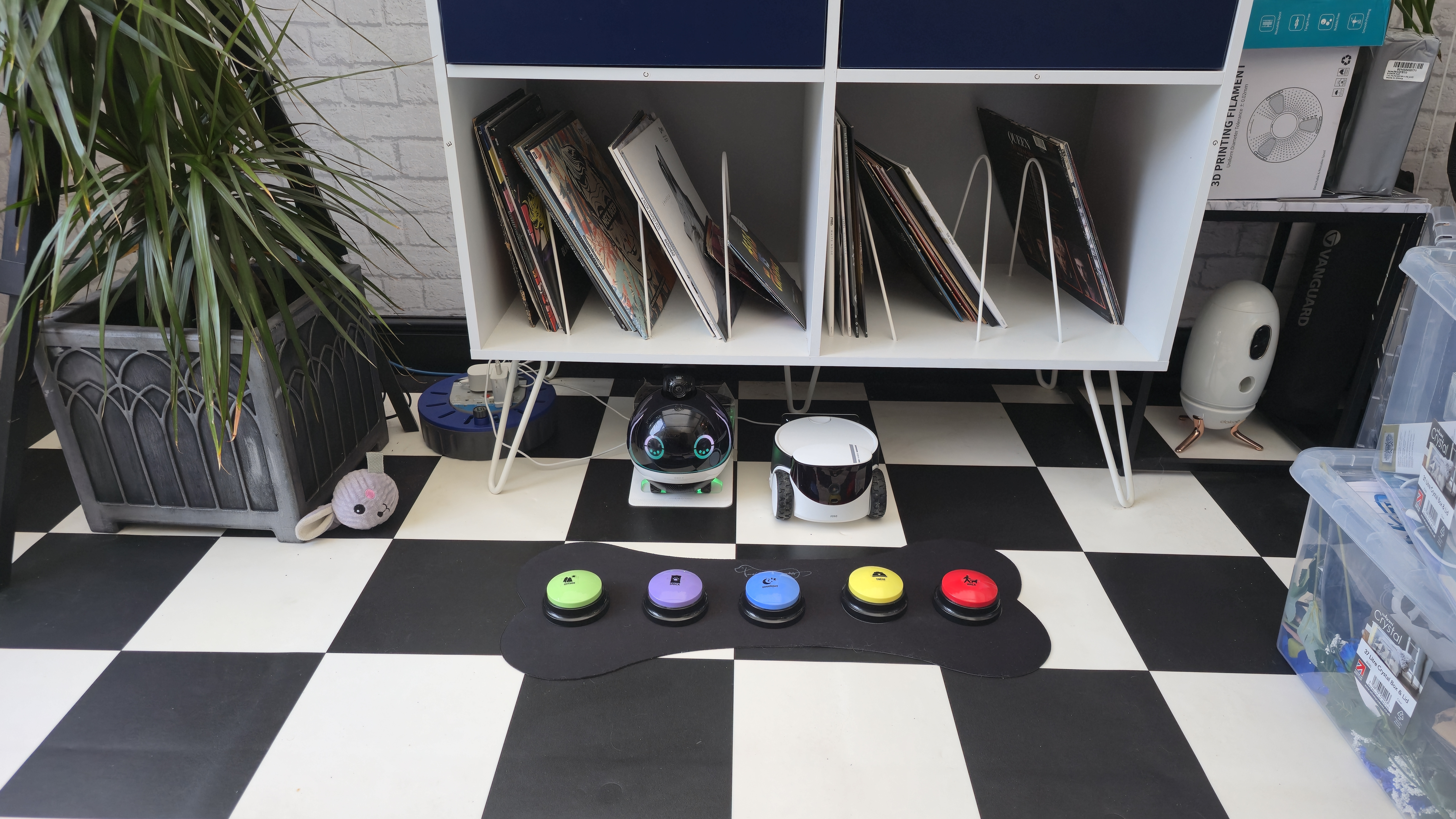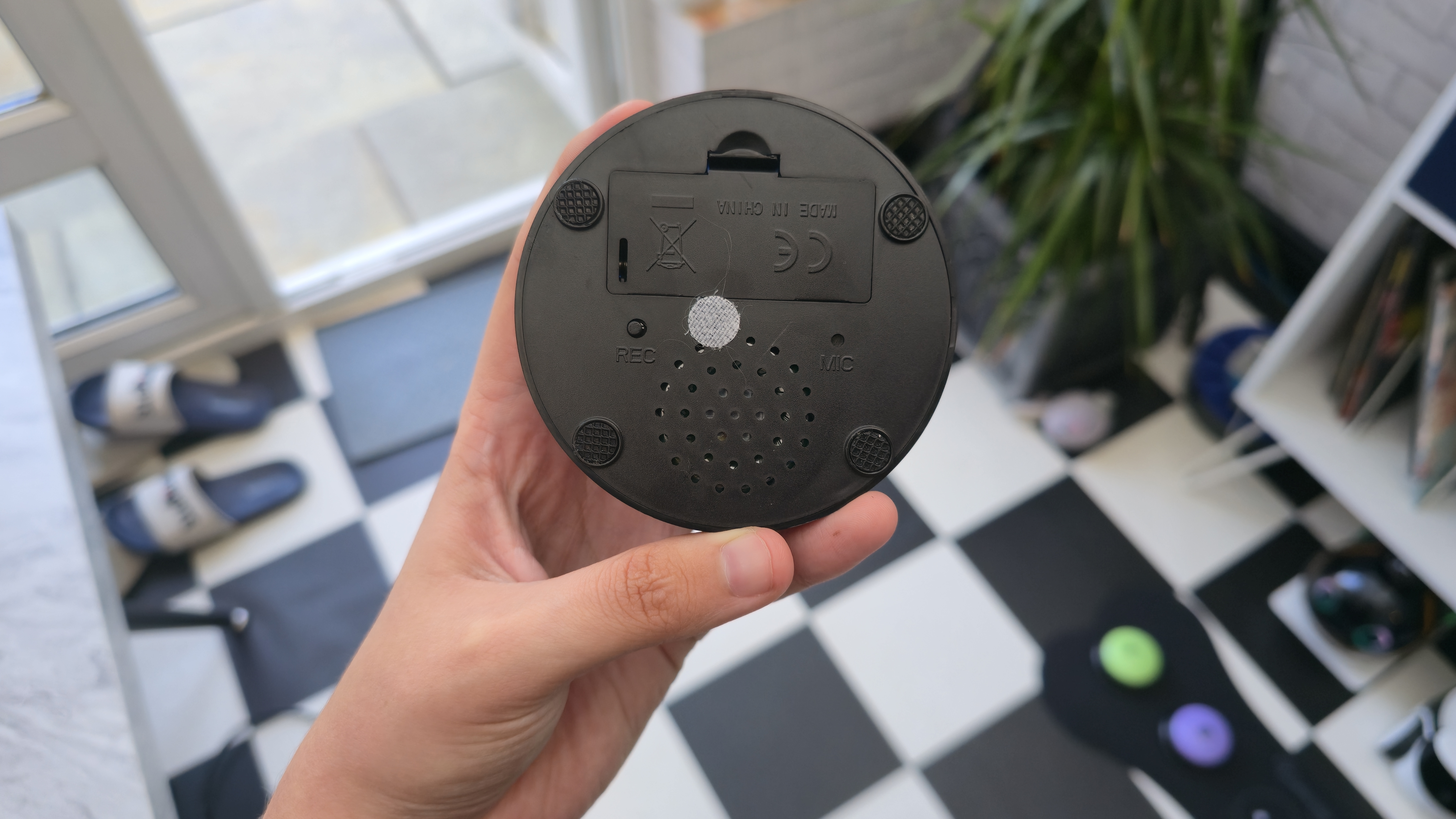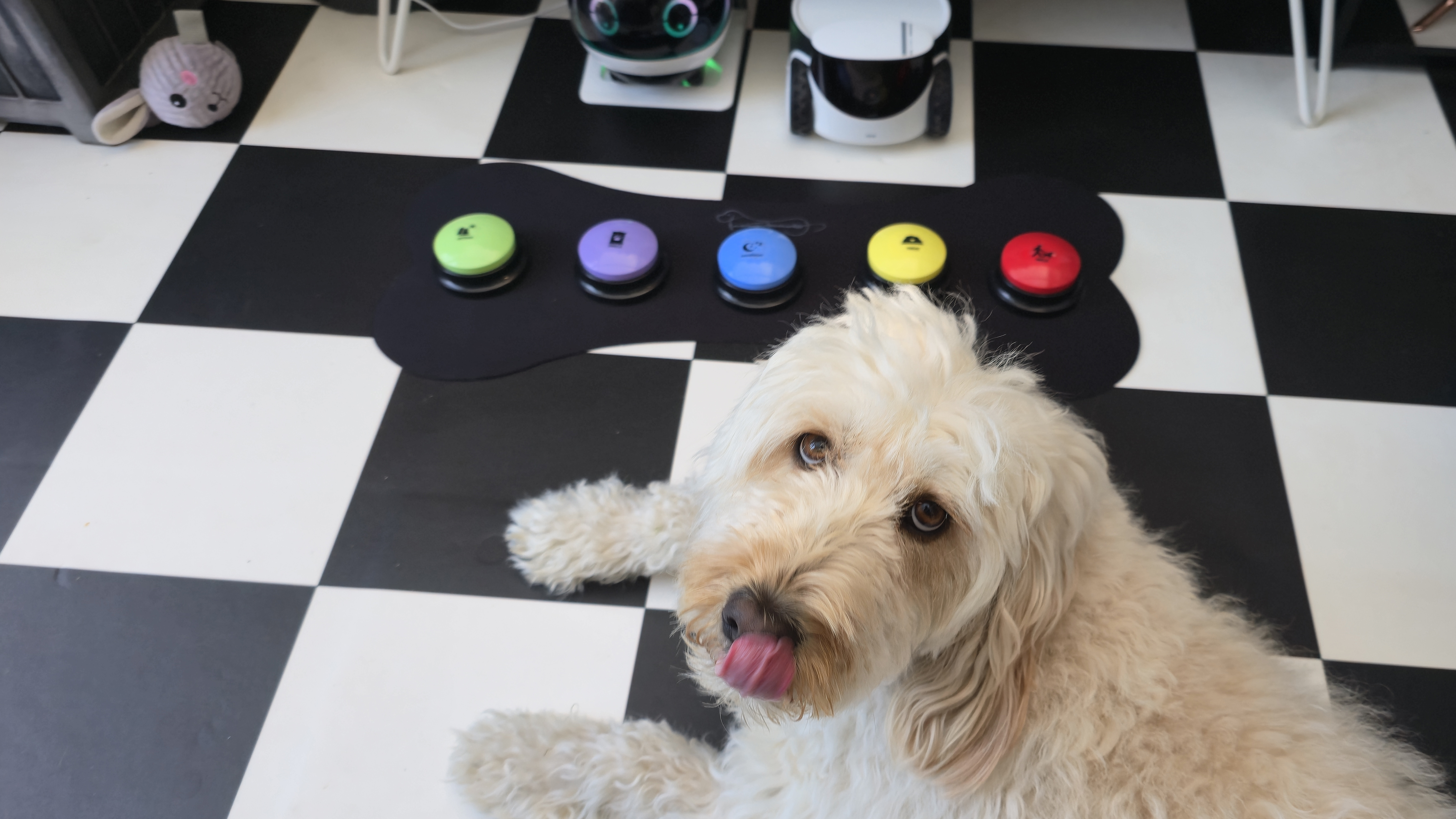
You might have come across this new trend online, where owners are using talking pet buttons to teach their dogs how to 'speak.'
While it might seem absurd – or even impossible – the concept is actually quite simple. It involves using word association and a set of brightly colored voice buttons to help your dog communicate and ask for what they need in a fun, interactive way.
My dog, Tilly, has never shied away from pet tech. After testing several of the best pet cameras in our home, I thought this could be a great way for her to let me know how she's doing and what she needs independently.
If your dog is a little on the timid side, getting them to actually press and engage with the buttons will be your biggest challenge. These things aren't a cheap investment either, so keep that in mind before you take the plunge.
When looking for pet voice command buttons online, there's plenty of choice – almost too much, to the point that it can be overwhelming. I bought this set from Amazon, which includes five blank buttons in different colors, a black rubber bone-shaped mat, and a transparent sticker sheet to help you visualize which button corresponds to which command or task.
Where to buy talking pet buttons
My experience using talking pet buttons
As a pet owner with a very spoiled dog, I was initially sceptical of these buttons and their purpose, given that my double doodle has everything she could ever possibly want or need at all times.
Treats, fully stocked. Walkies, twice a day. Attention, I work from home (need I say more?). But I was shocked to find that once Tilly had grasped how the buttons worked, she had no hesitation in making demands and letting me know what she wanted.




For example, I set up my five buttons with a simple one-word command for each, one of which was 'treat'. Tilly, like every other dog I imagine, reacts positively to this word, and quickly started to abuse her power with this button.
For the blue button, I recorded 'bedtime'. Tilly has always understood this to mean that we're going upstairs now, and it's time to unwind and relax. Having slept at the bottom of our bed since she was a puppy (like I said, spoilt), this is a place of comfort for her, and sometimes she'll sleep on the bed while I'm working at my desk.
Lately, there have been several evenings when my fiancé and I have been binge-watching a show, and Tilly would trot over to her buttons and hit 'bedtime', then turn to look at us for a reaction or approval. We're not always ready to go to bed when Tilly wants us to, and she hilariously took herself to bed in a strop one time after pressing the button (I wish I had it on video).
@tillythedood ♬ original sound - TillyTok
Another time, I had left some gravy bone biscuits on the kitchen floor for Tilly, and after finishing them, she continued to press 'treat'. I told her that she'd had enough and no more, but she persisted, and then started scratching the floor.
I thought this was strange behavior at first, but I went into the kitchen to find a gravy bone stuck behind the door that she couldn't reach. She had been trying to tell me all along.
This proved to me that these buttons are invaluable at breaking the communication barrier between dogs and humans in situations like this – but what do the experts say?
Are dogs really 'talking'?
According to a research paper published via MDPI, this approach to communicating with dogs using voice buttons might actually run the risk of overriding their natural behaviors, such as barking and whining, to communicate.
The researchers pointed out that online, this method of talking to dogs is often made to look as if the dogs are spontaneously expressing their thoughts in a cute way, whereas it has taken months of training to achieve this conditioned behavior, and can often make little sense without context or the owner needing to interpret the dog's intent.
If you ask me, I genuinely feel that communication between me and Tilly has improved since using these voice command buttons. It has taught me to be more attentive to how she may be feeling, rather than assuming that she's fine because she's sat quietly in her basket.

Allowing Tilly to interact with me in this way and asking for walkies at unusual times has not only been fun, but really eye-opening from an owner's perspective.
I've found that while working from home, Tilly will occasionally paw at my leg, and this means she wants to be picked up and cuddled while resting her head on my desk. She never used to do this previously, and I think using buttons has taught her that it's OK to get my attention, and it feels like a really natural way to bond.
Going forward, I think I might introduce an 'attention' button for Tilly, so she can express when she needs a bit of extra TLC. Whether or not this is something she'll benefit from is all part of the testing process, and I don't feel that any harm can come from trying.
Top tips for using talking pet buttons

1. Teach the commands: It's important that your dog has a good understanding of voice commands and what the words mean for these buttons to work – though I'm sure every dog must understand 'treat' or 'walk.'
2. Stay consistent: You also need to make sure you stick to your word (pardon the pun) in the early stages by consistently carrying out these actions, so your dog learns that pressing a button results in a certain reaction.
3. Start simple: With Tilly, we started off with words like 'outside' for when she wanted to go in the garden, and made sure to get up and open the back door every time she pressed the green button to build trust and help her learn. 'Walkie woos' is the big red danger button that we secretly hoped she wouldn't press too often.
4. Keep buttons in the same order: Another tip is to keep things simple and try not to change the order of the buttons by swapping their positions in the lineup. I found that Tilly got confused a few times when we swapped the buttons around in order after they came loose from the mat. What she thought was 'walkies' was actually 'dinner', and we knew she didn't mean this as she'd already been fed.
Looking for more pet tech reviews? Read our review of the Enabot ROLA PetPal (it's the craziest pet cam we've ever tested!). Or, for more ways to meet your dog’s needs, read how to know if your dog is happy
Edited by Megan Milstead.







